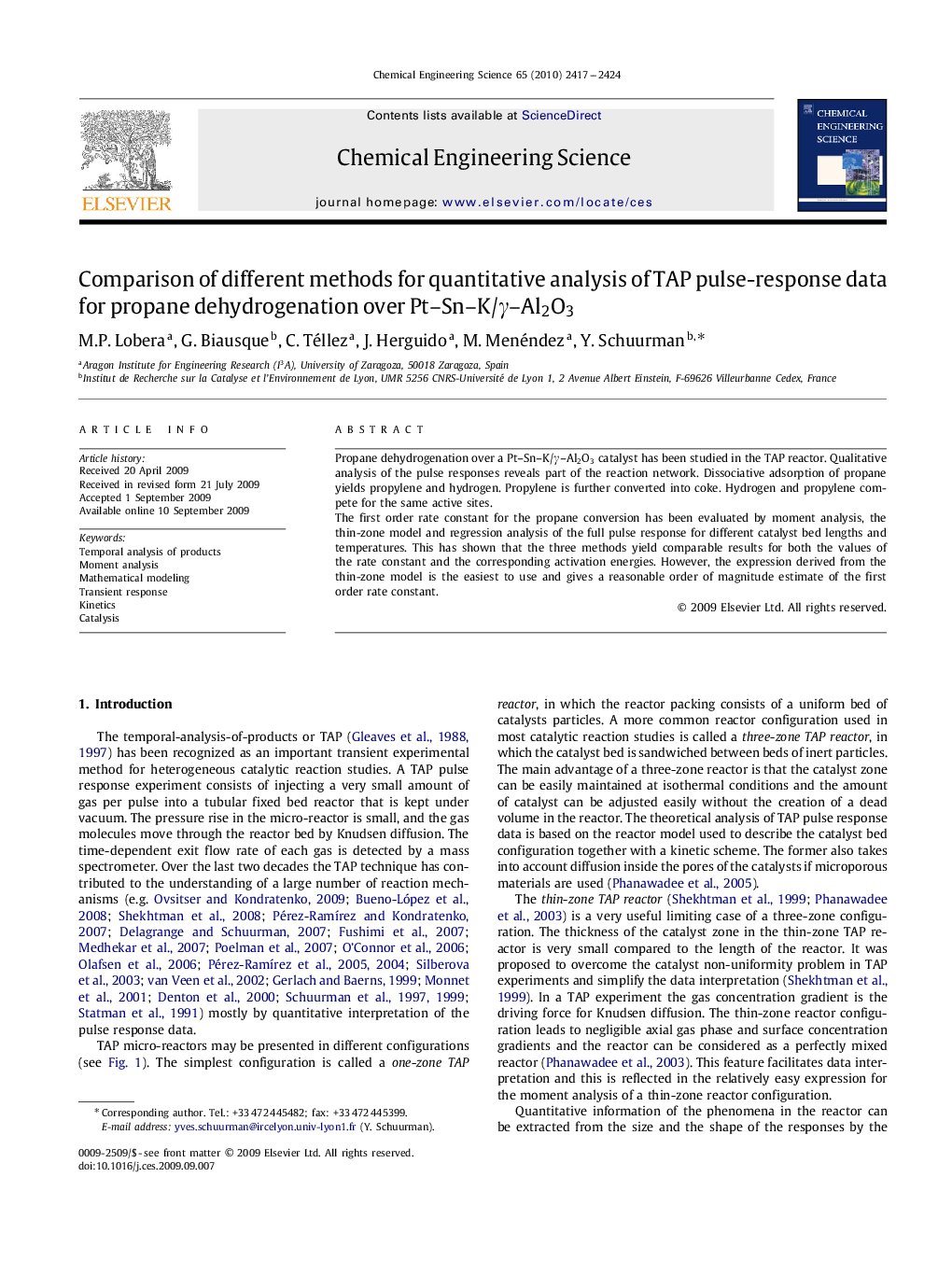| Article ID | Journal | Published Year | Pages | File Type |
|---|---|---|---|---|
| 156508 | Chemical Engineering Science | 2010 | 8 Pages |
Propane dehydrogenation over a Pt–Sn–K/γ–Al2O3 catalyst has been studied in the TAP reactor. Qualitative analysis of the pulse responses reveals part of the reaction network. Dissociative adsorption of propane yields propylene and hydrogen. Propylene is further converted into coke. Hydrogen and propylene compete for the same active sites.The first order rate constant for the propane conversion has been evaluated by moment analysis, the thin-zone model and regression analysis of the full pulse response for different catalyst bed lengths and temperatures. This has shown that the three methods yield comparable results for both the values of the rate constant and the corresponding activation energies. However, the expression derived from the thin-zone model is the easiest to use and gives a reasonable order of magnitude estimate of the first order rate constant.
